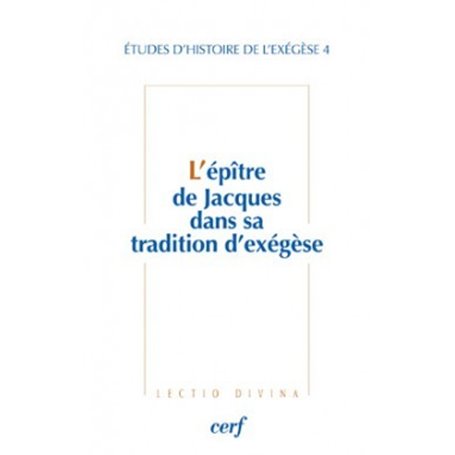L'épître de Jacques dans sa tradition d'exégèse
Format BrochéAuteur :

Livraison en Guyane tout compris

Retours et SAV simplifiés

Garantie Isleden
Description
Si les travaux actuels sur l'épître de Jacques sont nombreux et si, notamment à la suite de l'appréciation célèbre de Martin Luther la qualifiant d'" épître de paille ", la diffusion aux tout premiers siècles et l'inscription dans le canon ont suscité un certain nombre de recherches, on constate que l'étude de sa tradition d'exégèse proprement dite est un domaine relativement négligé. Ce volume essaie de combler partiellement cette lacune. Après avoir rappelé les grandes lignes de l'exégèse actuelle, notamment à partir du grand commentaire de Martin Dibelius et des travaux de Bauckham, Kloppenborg, Edgar et Theissen, il expose quatre étapes dans l'histoire de l'exégèse de Jacques. Le rôle d'Alexandrie dans l'histoire de la réception de ce texte est souligné et sont esquissées les grandes lignes de l'exégèse patristique, grecque (Cyrille de Jérusalem, Didyme, Origène) et latine (Augustin, Pélage). Au Moyen Âge latin, treize commentaires ont été identifiés, dont les méthodes spécifiques sont examinées, notamment à partir de Jc 1, 17 et Jc 2, 14-26. L exégèse protestante du XVIe siècle est étudiée, principalement à travers les commentaires de Luther et de Calvin mais aussi de Martin Bucer et de Huldrych Zwingli. Enfin, l'exégèse catholique du XVIe au début du XVIIe siècle fait l'objet d'une étude qui propose un inventaire des commentaires et se fonde sur trois auteurs principalement : Érasme, Guillaume Estius et Cornelius a Lapide. Ce volume est issu de la quatrième des " Journées bibliques " organisées par le Laboratoire d'études des monothéismes / Institut d'études augustiniennes (CNRS-EPHE Sciences religieuses-Paris-IV) et le Groupe de recherches sur les non-conformistes religieux des XVIe et XVIIe siècles et l'histoire des protestantismes (EA 4378, GRENEP Faculté de théologie protestante de l'Université de Strasbourg). -- Today, studies of the Epistle of James are numerous. Its diffusion in the first centuries of Christianity and its inscription in the canon occasioned considerable research, especially in response to Martin Luther's famous remark describing it as an 'epistle of straw'. Yet the study of its exegetical tradition for its own sake is a relatively neglected domain. This book fills that gap, at least partially. After recalling the main lines of today's exegesis, notably since Martin Dibelius' major work, and that of Bauckham, Kloppenborg, Edgar and Theissen, the author defines four stages in the exegetical history of James' epistle. The author stresses the role of Alexandria in the history its reception and the main lines of patristic, Greek (Cyril of Jerusalem, Didymus, Origen) and Latin (Augustine, Pelagius) exegesis. In Medieval Latin, thirteen commentaries are identified and their specific methods examined, especially from James 1, 17 and James 2, 14-26. 16th century Protestant exegesis is examined, principally through the commentaries of Luther and Calvin but also Martin Bucer and Huldrych Zwingli. Lastly, Catholic exegesis from the 16th century to the beginning of the 17th is explored to provide an inventory of commentaries based essentially on three authors: Erasmus, Willem Hessels van Est and Cornelius a Lapide. This book is the fruit of the fourth 'Journées bibliques' organised by the Laboratoire d'études des monothéismes / Institut d'études augustiniennes (CNRS-EPHE Sciences religieuses-Paris-IV) and the Research Group on religious non-conformists of the 16th and 17th centuries and the History of Protestantism (EA 4378, GRENEP, Faculty of Protestant Theology, Strasbourg University).
Caractéristiques
Caractéristiques
- Format
- Broché
- Collection
- Lectio divina
- Date de parution
- 02/11/2012



